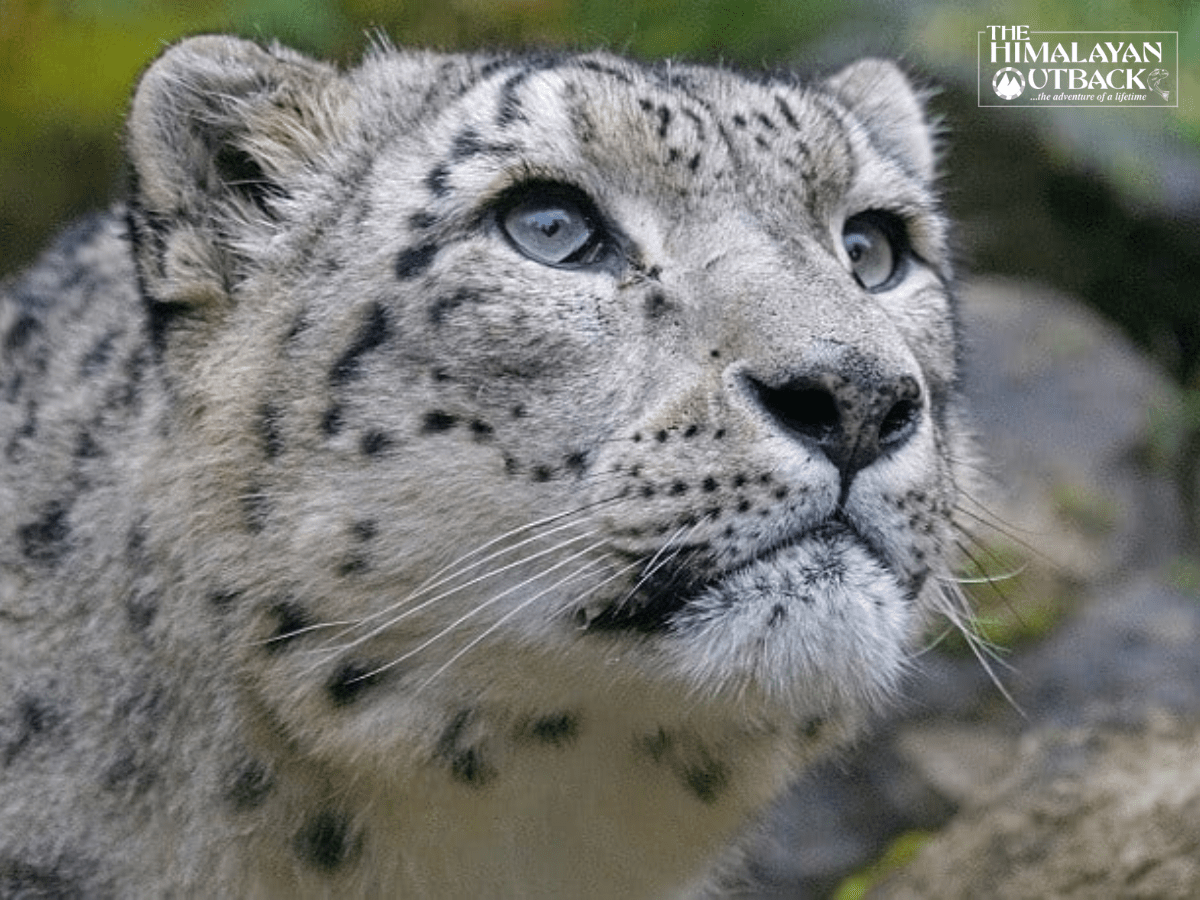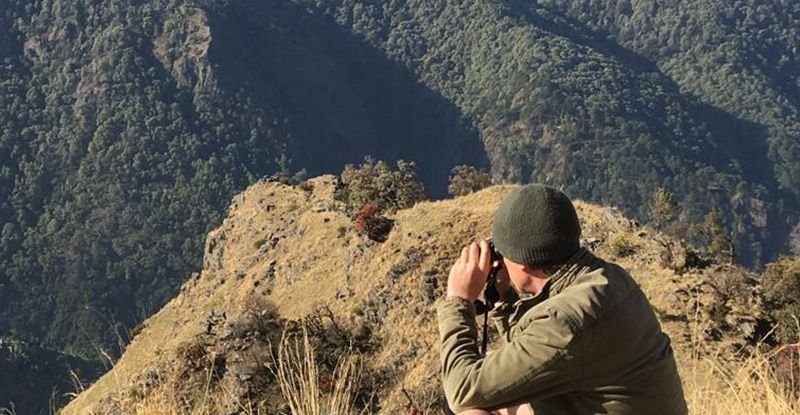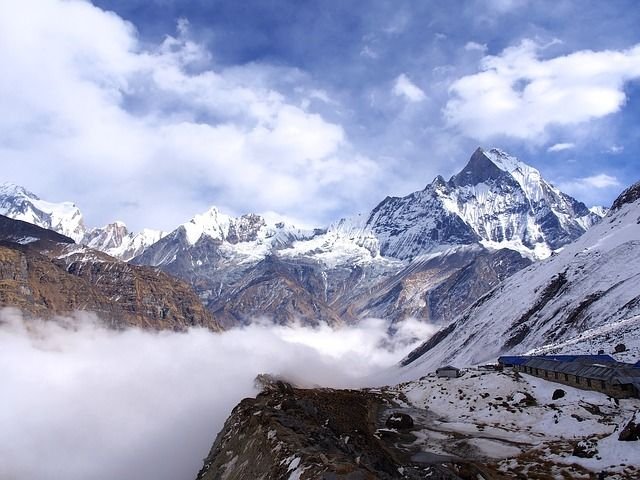Most of us do not think about Snow Leopards. This is because leopards are typically associated with formidable predators in hot climes. Those hot climes are Kenya, Tanzania, and Southern Asia. You may be aware that leopards are extraordinarily powerful. They are capable of dragging prey considerably larger than themselves up a tree. You may also imagine black patches on yellow fur.
Leopards have multiple subspecies: Amur Leopards, Javan Leopards, South Arabian Leopards, Central Asian Leopards, and Sri Lankan Leopards. The Snow Leopard (scientific name Panthera uncia) is not a Leopard at all. To be honest, there isn’t another huge cat on the earth quite like them. The Himalayan Outback brings to you the top 7 facts about snow leopards that will amaze you.
How do snow leopards look like?

Most snow leopards weigh between 60 and 120 pounds and stand two to five feet tall and four to five feet long. Despite being enormous creatures, they are the smallest of the big cat species. Snow Leopards’ bodies have developed to be more adapted to their freezing environment. As a result, they’re stocky cats with short legs and small, rounded ears that assist in reducing heat loss. They also have large nasal cavities that allow them to heat the air they breathe before it enters their lungs.
Snow Leopard hair is extremely thick– up to five inches– to help them stay warm in the snow. This hair also protects their huge paws. They act almost like snowshoes to help them walk and pursue their prey in the snow. The hue of this thick Snow Leopard coat matches the wintry atmosphere. They often have a white-gray coat with black rosettes that serve as excellent concealment, and their belly is pure white.
The Snow Leopard’s tail is extraordinarily long (about 3 feet) and large in comparison to other cats. This is due to the fact that they utilise their tails to cover sensitive parts in order to remain warm. Their tails also serve as fat storage for periods when food is scarce.
Where do snow leopards live?
Snow Leopards reside in some of the world’s harshest climates, in the high, rocky mountains of Central Asia (including the Himalayas). They prefer dry, desolate hillsides with few trees and scant vegetation. They travel upwards in elevation throughout the summer, between 10,000 and 20,000 feet, which puts them well above the tree line.
During the winter, they may descend as far as 4,000 feet. Snow Leopards can only be found on one continent: Asia. However, they reside in 12 countries: Afghanistan, Bhutan, China, India, Kazakhstan, Kyrgyzstan, Mongolia, Nepal, Pakistan, Russia, Tajikistan, and Uzbekistan. China is home to more than half of the world’s population.
What do snow leopards eat?
Snow Leopards are crepuscular, which means they are most active at sunrise and sunset. They are opportunistic predators, ready to adapt to whatever prey is plentiful. They are the only large cat species that will do this. Having said that, Snow Leopards prefer big herbivores such as Mountain Sheep, Ibexes, and Goats as prey.
These cats have the ability to take down creatures three times their own weight. When forced, they will consume smaller animals such as rabbits, voles, and marmots. In a pinch, they’ll even hunt birds. Snow Leopards often make one large kill per week or two. Because they are sluggish eaters, a good hunt may span many days. They are prone to store their food in snow tunnels at this period.
What is snow leopards’ biggest threat?
Humans are the only Snow Leopard predators. As human civilization encroaches on their environment, their food supplies decline. And they feed on domesticated animals. Farmers frequently murder Sheep, Goats, Horses, and Young Yaks in retribution for hunting them.
Snow Leopard hunting is also a concern. Their gorgeous and thick pelts make them a commodity in the illicit wildlife trade. Their bones are often utilised in traditional Asian treatments as a replacement for Tiger bones. According to recent statistics, poaching is still a major problem for Snow Leopard conservation. Hundreds of animals are killed each year.
Climate Change and Snow Leopards?
Climate change may be the most serious long-term hazard to Snow Leopards. In the last decade, habitat destruction and poaching have wiped out almost 20% of the population. However, climate change might affect the geography and weather of the Snow Leopard’s habitat. This further poses issues for the animals on which it feeds. According to WWF research, the areas most likely to be affected are in the northern and eastern portions of the Snow Leopard’s range, where an estimated 50% of all wild Snow Leopards live.
In Which category do snow leopards belong?
The IUCN currently classifies them as “vulnerable.” Vulnerable species are those that are on the verge of becoming endangered. It places them at “high risk of extinction in the wild” as well. However, the organization’s least at-risk classification of threatened animals is vulnerable.
Snow Leopards have an estimated population of 4500-8000 in the wild, with another 600-700 in captivity. Having said that, the population is extremely difficult to track because of its vast range and poor environment. However, the wild population is thought to be declining.
What are the efforts for snow leopards’ conservation?
The Snow Leopard Trust, based in Seattle, works in several of the animal’s native nations, including China, India, Kyrgyzstan, Mongolia, and Pakistan. These nations are home to more than 75% of the world’s Snow Leopards. The NGO focuses on animal protection through collaborating on conservation initiatives with local populations. In addition, they do scientific study to better understand their requirements, habitats, and other traits.
Snow Leopards are also being protected by the World Wildlife Fund. In 2012, the organisation (in collaboration with USAID) launched a four-year initiative. It would protect Snow Leopard habitat while also boosting water security. This would prepare high mountain communities for climate change. In addition, WWF works with Mongolian goat herders to reduce retaliatory killings by creating livestock insurance policies.
Conclusion
These Snow Leopard facts may make readers wish they could have a close contact with the cat. However, the zoo is likely to be the only location for this. Snow Leopards, often known as “ghosts of the mountains,” dwell in such isolated areas, have such excellent camouflage, and are so elusive that even catching them on a video trap is reason for celebration. So these were the top 7 facts about snow leopards that will amaze you. How do you like the information provided by The Himalayan Outback about snow leopards? Let us know in the comments section!







